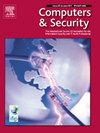On providing multi-level security assurance based on Common Criteria for O-RAN mobile network equipment. A test case: O-RAN Distributed Unit
IF 4.8
2区 计算机科学
Q1 COMPUTER SCIENCE, INFORMATION SYSTEMS
引用次数: 0
Abstract
Open Radio Access Network (O-RAN) technology introduces disaggregation of RAN network functions, offering enhanced flexibility for extending hardware and software. To ensure interoperability between such components, the O-RAN Alliance (the main Standards Development Organisation of O-RAN) defined a set of new interfaces. The network may be built by integrating components from different providers. The introduction of multi-provider components and functions increases security challenges due to the increase of security surfaces (e.g., new interfaces). Therefore, it is relevant for network operators to gain a certain level of assurance that O-RAN components deployed in the network are secure. This paper proposes a framework for the security evaluation of O-RAN interfaces that provides assurance that the O-RAN component has been tested deeply enough to demonstrate its resilience to attacks. Our proposal is based on Common Criteria standards and provides several security assurance levels depending on the intended use of the O-RAN network. Each security assurance level involves a set of tests, from security conformance tests to specialised fuzzy tests. We have specified them in the Vulnerability assessment for the product, as required in the Common Criteria. The validation of the framework focuses on the O-DU (O-RAN Distributed Unit) component, which is a logical module responsible for the implementation of L2 layer functionalities; nevertheless, it can be easily extended to other O-RAN components: O-CU (O-RAN Central Unit) and O-RU (O-RAN Radio Unit) as well as to Non and Near Real Time Radio Intelligent Controller (RIC). The O-DU evaluation results show that it is possible to provide the evaluation at different levels of security assurance, which correspond to different intended uses of the 5G O-RAN mobile network.
求助全文
约1分钟内获得全文
求助全文
来源期刊

Computers & Security
工程技术-计算机:信息系统
CiteScore
12.40
自引率
7.10%
发文量
365
审稿时长
10.7 months
期刊介绍:
Computers & Security is the most respected technical journal in the IT security field. With its high-profile editorial board and informative regular features and columns, the journal is essential reading for IT security professionals around the world.
Computers & Security provides you with a unique blend of leading edge research and sound practical management advice. It is aimed at the professional involved with computer security, audit, control and data integrity in all sectors - industry, commerce and academia. Recognized worldwide as THE primary source of reference for applied research and technical expertise it is your first step to fully secure systems.
 求助内容:
求助内容: 应助结果提醒方式:
应助结果提醒方式:


